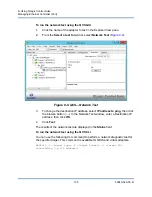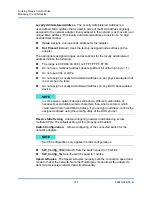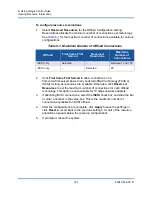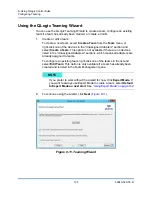
8–Using QLogic Control Suite
Managing the LAN Device
119
83840-546-00 D
VLAN ID
Enables VLAN tagging and configures the VLAN ID when
Priority &
VLAN Enabled
is selected as the
Priority & VLAN
setting. The range for the
VLAN ID is 1 to 4094 and must match the VLAN tag value on the connected
switch. A value of 0 (default) in this field disables VLAN tagging.
Risk Assessment of VLAN Tagging through the NDIS Miniport Driver
QLogic's NDIS 6.0 miniport driver provides the means to allow a system
containing a QLogic adapter to connect to a tagged VLAN. On Windows
Server systems, this support was only provided through the use of an
intermediate driver (ASP). Unlike ASP, however, the NDIS 6 driver's support
for VLAN participation is only for a single VLAN ID.
Also unlike ASP, the NDIS 6.0 driver only provides VLAN tagging of the
outbound packet, but does not provide filtering of incoming packets based
on VLAN ID membership. This is the default behavior of all miniport drivers.
While the lack of filtering packets based on VLAN membership may present
a security issue, the following provides a risk assessment based on this
driver limitation for an IPv4 network:
A properly configured network that has multiple VLANs should
maintain separate IP segments for each VLAN. This is necessary
since outbound traffic relies on the routing table to identify which
adapter (virtual or physical) to pass traffic through and does not
determine which adapter based on VLAN membership.
Since support for VLAN tagging on QLogic's NDIS 6.0 driver is limited
to transmit (Tx) traffic only, there is a risk of inbound traffic (Rx) from a
different VLAN being passed up to the operating system. However,
based on the premise of a properly configured network above, the IP
segmentation and/or the switch VLAN configuration may provide
additional filtration to limit the risk.
In a back-to-back connection scenario, two computers on the same IP
segment may be able to communicate regardless of their VLAN
configuration since no filtration of VLAN membership is occurring.
However, this scenario assumes that the security may already be
breached since this connection type is not typical in a VLAN
environment.
NOTE
If an intermediate driver is managing the network adapter for VLAN tagging,
the
Priority & VLAN Disabled
and
Priority Enabled
settings should not be
used. Use the
Priority & VLAN Enabled
setting and change the
VLAN ID
to
0 (zero).
















































